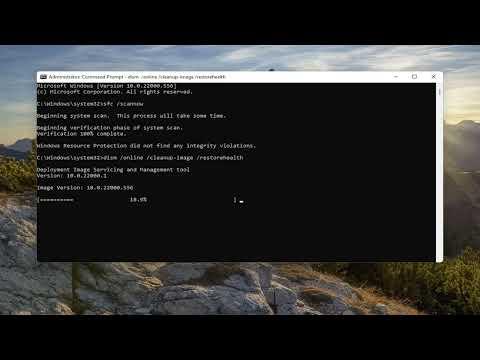I recently faced an issue where PowerShell was causing unexpectedly high CPU usage on my Windows 11 system. It was affecting my computer’s performance significantly, and I needed to find a solution to address this problem. After some research and trial and error, I managed to resolve the issue effectively. Here’s a step-by-step account of how I fixed the high CPU usage caused by PowerShell.Initially, I noticed that PowerShell was consuming an excessive amount of CPU resources. This was apparent from the Task Manager, where PowerShell’s CPU usage was spiking and staying high even when I wasn’t actively using it. High CPU usage can be problematic as it can lead to system slowdowns, affect other applications, and even cause the computer to become unresponsive.The first thing I did was to open Task Manager by pressing Ctrl + Shift + Esc and check the processes tab to confirm that PowerShell was indeed using a lot of CPU. I saw that PowerShell was listed with high usage percentages, and it was clear that something was not right. I decided to delve deeper into the issue to understand why PowerShell was consuming so many resources.My next step was to investigate whether there were any scripts or commands running in the background that could be causing the high CPU usage. I opened PowerShell and checked if there were any scripts or processes that had been started and were still running. To do this, I used the Get-Process cmdlet to list all running processes and looked specifically for any PowerShell instances or scripts that might be consuming resources.It turned out that there were a couple of scheduled tasks and scripts running in the background. One of them was a script that had been set up to run periodically and perform some maintenance tasks. I suspected that this script might be causing the issue, especially if it was not optimized or had become problematic over time.To further diagnose the problem, I used the Get-EventLog cmdlet to check the event logs for any errors or warnings related to PowerShell. I looked specifically for entries that might indicate issues or errors occurring during the execution of PowerShell scripts. This approach provided some insights into errors that were occurring, which might be contributing to the high CPU usage.One of the critical steps I took was to review and optimize the PowerShell scripts that were running. I examined the scripts for any inefficiencies or potential issues that could cause high CPU consumption. For instance, I looked for any loops or recursive functions that could be consuming excessive resources. In some cases, I identified areas where the scripts could be optimized to reduce their resource usage.Additionally, I checked for any updates or patches for PowerShell. Sometimes, high CPU usage issues can be related to bugs or inefficiencies in the software itself. I visited the official Microsoft website and checked for any updates or patches for Windows and PowerShell that might address performance issues. Applying these updates can often resolve underlying issues that cause high CPU usage.Another approach I took was to disable any unnecessary startup scripts or tasks that might be triggering PowerShell to run frequently. I accessed the Task Scheduler and reviewed the list of scheduled tasks to see if there were any that might be causing PowerShell to run more often than necessary. I disabled or modified the schedule of these tasks to reduce the frequency of PowerShell executions.I also explored the possibility that a third-party application or extension might be interacting with PowerShell in a way that causes high CPU usage. I reviewed recently installed applications and extensions and considered whether any of them might be causing the issue. In some cases, disabling or uninstalling such applications resolved the problem.To further isolate the issue, I created a new PowerShell profile and tested if the problem persisted with a clean profile. This helped me determine whether the issue was related to my existing profile or configuration. Creating a new profile is a good way to check if custom settings or configurations are contributing to the problem.In some cases, the issue might be related to specific modules or snap-ins used in PowerShell. I reviewed the modules that were loaded and considered whether any of them might be contributing to the high CPU usage. By unloading or updating these modules, I was able to see if there was any improvement in CPU performance.Finally, I considered resetting PowerShell settings to their default state. This approach can help resolve issues caused by misconfigured settings or corrupted profiles. I used the Reset-WinRM cmdlet to reset Windows Remote Management settings, which can sometimes impact PowerShell performance. Additionally, I reset other related settings to ensure that PowerShell was operating with default configurations.After taking these steps, I monitored the CPU usage again to see if the problem was resolved. Fortunately, the high CPU usage caused by PowerShell significantly decreased, and my computer’s performance improved. I was relieved to see that the issue was resolved, and PowerShell was no longer causing undue strain on my system.In conclusion, resolving high CPU usage issues caused by PowerShell involves a combination of diagnosing running scripts, optimizing configurations, checking for updates, and reviewing scheduled tasks. By following these steps and systematically addressing potential causes, I was able to fix the problem and restore my computer’s performance. If you encounter similar issues, these approaches might help you resolve the problem and improve your system’s overall efficiency.
Fix PowerShell Causing High CPU Usage in Windows 11/10 [Tutorial]
